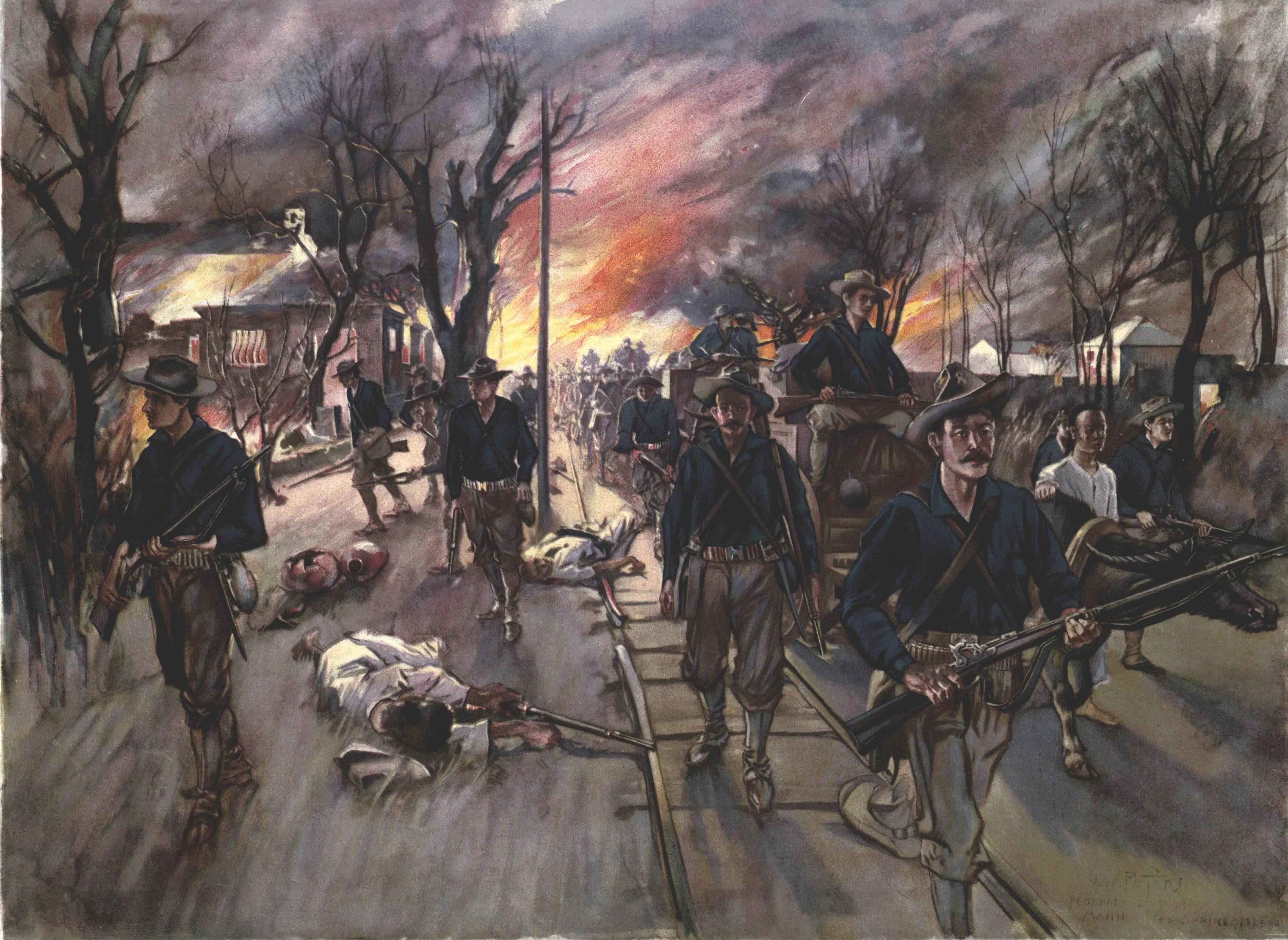Philippine–American War
 The Philippine–American War, known alternatively as the Philippine Insurrection, Filipino–American War, or Tagalog Insurgency, emerged following the conclusion of the Spanish–American War in December 1898 when the United States annexed the Philippine Islands under the Treaty of Paris. Philippine nationalists constituted the First Philippine Republic in January 1899, seven months after signing the Philippine Declaration of Independence. The United States did not recognize either event as legitimate, and tensions escalated until fighting commenced on February 4, 1899, in the Battle of Manila.
The Philippine–American War, known alternatively as the Philippine Insurrection, Filipino–American War, or Tagalog Insurgency, emerged following the conclusion of the Spanish–American War in December 1898 when the United States annexed the Philippine Islands under the Treaty of Paris. Philippine nationalists constituted the First Philippine Republic in January 1899, seven months after signing the Philippine Declaration of Independence. The United States did not recognize either event as legitimate, and tensions escalated until fighting commenced on February 4, 1899, in the Battle of Manila.Shortly after being denied a request for an armistice, the Philippine Council of Government issued a proclamation on June 2, 1899, urging the people to continue the war. Philippine forces initially attempted to engage U.S. forces conventionally but transitioned to guerrilla tactics by November 1899. Philippine President Emilio Aguinaldo was captured on March 23, 1901, and the war was officially declared over by the US on July 4, 1902. However, some Philippine groups – some led by veterans of the Katipunan, a Philippine revolutionary society that had launched the revolution against Spain – continued to fight for several more years. Other groups, including the Muslim Moro peoples of the southern Philippines and quasi-Catholic Pulahan religious movements, continued hostilities in remote areas. The resistance in the Moro-dominated provinces in the south, called the Moro Rebellion by the Americans, ended with their final defeat at the Battle of Bud Bagsak on June 15, 1913.
The war resulted in at least 200,000 Filipino civilian deaths, mostly from famine and diseases such as cholera.